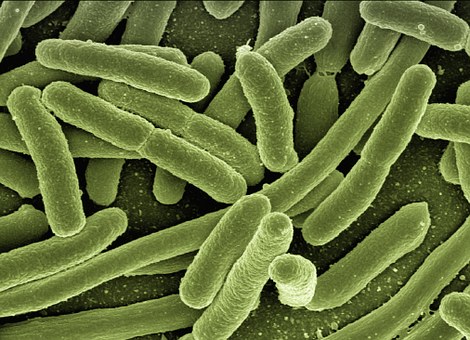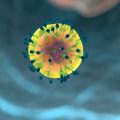DE FAAKTO OUTBREAK INTELLIGENCE
SITUATION-TUBERCULOSIS (TB) HEALTH SECURITY RISK
METHODOLOGY–OSINT research
BACKGROUND
According to The World Health Organization, Tuberculosis is a public health crisis and a health security threat. Tuberculosis (TB) is an airborne bacterial infection caused by Mycobacterium tuberculosis. TB can be acquired by breathing contaminated air droplets coughed or sneezed by a person nearby who has active Tuberculosis. People can also get Bovine Tuberculosis by ingesting unpasteurized milk products contaminated with Mycobacterium Bovis. (IAMAT) While TB occurs in every part of the world, areas of significant risk include South-East Asia, the Western Pacific regions and Africa. The 8 countries that accounted for two thirds of the new TB cases include: India, China, Indonesia, Philippines, Pakistan, Nigeria, Bangladesh and South Africa. (WHO)
RISK ASSESSMENT & ANALYSIS
De Faakto intelligence research indicates that TB, while a treatable disease can be difficult to diagnose & complex to treat. If left untreated TB causes significant morbidity & mortality. 1.6 million People died from TB in 2017. Those at greatest risk are travelers, people with weakened immune systems, young children, tobacco users, diabetics, HIV positive persons and the malnourished. People at higher risk, should assess the dangers of travelling or working in areas where TB is endemic. People travelling to areas with incidence of TB transmission should avoid overcrowded areas and people known to have active TB. Travelers to endemic areas should know the signs & symptoms of active TB, and seek medical attention immediately should symptoms occur. Mantoux screening (TB testing) is recommended before and after travelling to high risk areas. Those at increased risk should consult their physician to determine if the Bacillus Calmette-Guérin (BCG) vaccine is recommended. Health care workers require regular TB screening and should use standard precautions when treating TB patients.
TUBERCULOSIS FAAKT SHEET
About Tuberculosis (TB)
- TB is one of the top 10 causes of death worldwide (WHO)
2017
- 10 million people ill with TB
- 6 million die from TB
- 1 million children ill with TB
- 230 000 children die of TB (WHO)
- TB is a leading killer of HIV-positive people
- Multidrug-resistant TB (MDR-TB) remains a public health crisis and a health security threat (WHO)
- TB is caused by Mycobacterium tuberculosis (most often affect the lungs)
- Tuberculosis is curable and preventable (WHO)
Pulmonary TB is Airborne
- Airborne bacterial infection is caused by Mycobacterium tuberculosis
- People with lung TB cough, sneeze or spit-Propel the TB germs into the air
- Inhale only a few of these germs and become infected (WHO)
Bovine Tuberculosis
- Acquired through consumption of unpasteurized milk products contaminated with Mycobacterium Bovis (IAMAT)
¼ of the world’s population has latent TB
- People infected by TB bacteria that are not ill, cannot transmit the disease
- Latent TB-5–15% lifetime risk of falling ill
- Persons with compromised immune systems, HIV, malnutrition, diabetes, use tobacco, have a much higher risk of falling ill (WHO)
Active TB Disease
- Symptoms-cough, fever, night sweats, or weight loss
- Symptoms may be mild for many months
- Delays in seeking care results in transmission of the bacteria to others
- People with active TB can infect 10–15 other people through close contact over the course of a year
- Untreated-45% of HIV-negative people with TB on average and nearly all HIV-positive people with TB will die (WHO)
Global TB
- TB occurs in every part of the world
- 62% of new cases-South-East Asia and Western Pacific regions
- 25% of new cases-African region
8 countries accounted for two thirds of the new TB cases
- India
- China
- Indonesia
- Philippines
- Pakistan
- Nigeria
- Bangladesh
- South Africa (WHO)
Symptoms of Active TB
- Cough with sputum and blood at times
- Chest pains
- Weakness
- Weight loss
- Fever
- Night sweats (WHO)
Diagnosis of Active TB
- Sputum smear microscopy for diagnosis of TB
- Laboratory technicians look at sputum samples under a microscope to see if bacteria present
- Microscopy detects only half of TB cases
- Microscopy cannot detect drug-resistance (WHO)
- Xpert MTB/RIF® Detects TB and resistance to rifampicin TB medicine
- Diagnosis can be made within 2 hours (WHO)
- Multi-drug resistant TB & HIV-associated TB can be complex and expensive to diagnose
- Tuberculosis is particularly difficult to diagnose in children
- Xpert MTB/RIF assay is generally available to assist with the diagnosis of paediatric TB (WHO)
Treatment
- TB is a treatable and curable disease (WHO)
- Active, drug-susceptible TB disease is treated with a standard 6 month course of 4 antimicrobial drugs
- Between 2000 and 2017, an estimated 54 million lives were saved through TB diagnosis and treatment
TB and HIV
- People living with HIV are 20 to 30 times more likely to develop active TB disease
- HIV and TB form a lethal combination, each speeding the other’s progress
Prevention
- Avoid exposure to people known to have active Tuberculosis
- Only consume pasteurized milk products
- Travelers at higher risk should have a pre-departure tuberculin skin test (TST) and be re-tested upon their return home
- Those at increased risk should also consult their healthcare provider to determine if the Bacillus Calmette-Guérin (BCG) vaccine is recommended (IAMAT)
Resources
IAMAT https://www.iamat.org/country/india/risk/tuberculosis
WHO https://www.who.int/en/news-room/fact-sheets/detail/tuberculosis
Disclaimer-De Faakto Intelligence Research is provided to first responders for situational awareness, advice, guidance and educational purposes. Intelligence is perishable and fluid. Intelligence is updated and reassessed as new information becomes available. Sources are evidence based and multiple sources are used when possible. Sometimes intelligence assessments present gaps in information, this is a reality in intelligence led operations and gaps are filled when information presents. Emergency first responders should always follow best industry practices, organizational policy-procedures and regulatory standards.






